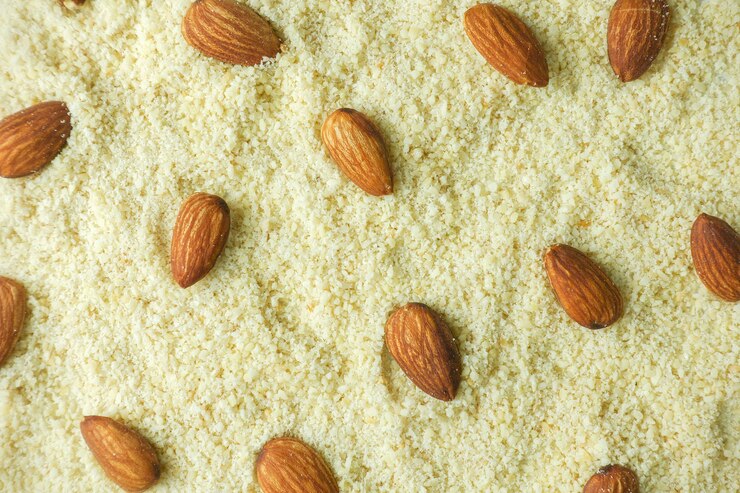Barley is gaining attention as a superfood for those managing diabetes, thanks to its remarkable nutritional profile and potential to support blood sugar control. But is barley good for diabetics?
Yes, barley is good for diabetics due to its low glycemic index and high fiber content, particularly beta-glucan, which helps regulate blood sugar levels. It can also improve insulin sensitivity and reduce post-meal sugar spikes, making it a beneficial addition to a diabetic-friendly diet.
This ancient grain is packed with fiber, vitamins, and minerals that make it a smart addition to a diabetes-friendly diet. One standout feature of barley is its high content of beta-glucan, a type of soluble fiber that slows digestion and helps stabilize blood sugar levels. Along with being a versatile grain for meals, it also offers long-term health benefits for heart health and weight management—key factors for diabetes management.
In this article, we’ll explore barley benefits for diabetes, its role in controlling blood sugar spikes, and practical ways to incorporate it into your diet. Whether you’re looking to add variety to your meals or improve your overall health, barley may be the wholesome addition you’ve been searching for. Let’s dive in!
Nutritional Benefits of Barley for Diabetics
Barley is a powerhouse of nutrition, making it an excellent choice for individuals managing diabetes. Its unique composition supports blood sugar control, overall health, and weight management. Let’s explore why barley stands out as a diabetes-friendly food.
Low Glycemic Index
The glycemic index of barley is significantly lower than many other grains, making it ideal for maintaining stable blood sugar levels. The glycemic index (GI) measures how quickly a carbohydrate-containing food raises blood sugar. Foods with a low GI, like barley, release glucose more gradually, preventing sharp spikes and crashes in blood sugar levels. Studies have shown that regular consumption of barley can improve post-meal glucose response and long-term glycemic control. This makes barley a valuable addition to any diabetes-friendly diet.
Rich in Fiber
One of the most notable barley benefits for diabetes is its high fiber content, particularly soluble fiber in the form of beta-glucans. Beta-glucans work by forming a gel-like substance in the digestive tract, which slows the absorption of glucose into the bloodstream. This process not only helps stabilize blood sugar but also enhances insulin sensitivity, reducing the risk of insulin resistance. A single serving of barley provides significant amounts of dietary fiber, contributing to better glycemic control and improved digestive health.
Nutrient-Rich
Barley is packed with essential nutrients that support overall health, many of which are particularly beneficial for diabetics:
Magnesium: Crucial for insulin function and glucose metabolism, magnesium helps regulate blood sugar levels.
Selenium: Acts as an antioxidant, reducing oxidative stress and inflammation, which are common concerns in diabetes.
B Vitamins: These play a role in energy production and maintaining healthy nerve function, which is vital for preventing diabetes-related complications.
By providing a variety of nutrients, barley not only aids in blood sugar management but also supports overall well-being, reducing the risk of complications often associated with diabetes.
Weight Management
Maintaining a healthy weight is a key aspect of diabetes management, and barley can help in this regard. Its high fiber content promotes satiety, keeping you fuller for longer and reducing the likelihood of overeating. Additionally, the slow digestion of barley’s carbohydrates ensures a steady release of energy, preventing hunger pangs. Incorporating barley into meals can aid in weight control, a crucial factor in managing type 2 diabetes effectively.
The combination of a low glycemic index, high fiber content, essential nutrients, and weight-management benefits makes barley an exceptional grain for people with diabetes. The unique ability of barley to stabilize blood sugar levels, improve insulin sensitivity, and promote satiety highlights its importance in a diabetes-friendly diet. Adding barley to soups, salads, or as a side dish can provide a satisfying and nutritious way to support blood sugar control and overall health. Embrace the barley and blood sugar control benefits to enhance your diabetes management journey.
Potential Risks of Barley for Diabetics
While barley offers numerous health benefits for people managing diabetes, it’s essential to be mindful of certain risks and considerations to ensure it supports, rather than hinders, blood sugar control.
Portion Control
Although barley is a low-glycemic, fiber-rich grain, consuming excessive portions can lead to increased carbohydrate intake, potentially spiking blood sugar levels. Like all carbohydrate-containing foods, barley should be eaten in moderation and balanced with protein, healthy fats, and non-starchy vegetables. For diabetics, a typical serving size of cooked barley is about ½ cup, which contains approximately 22 grams of carbohydrates. Monitoring portion sizes is key to keeping blood sugar levels stable and avoiding unintended glucose spikes.
Processing Concerns
Refined barley products, such as barley flour or quick-cooking barley, may have a higher glycemic impact compared to whole forms like hulled or pearl barley. Processing removes parts of the grain, reducing fiber and altering how carbohydrates are absorbed. For optimal blood sugar management, choose minimally processed barley options, such as hulled barley, which retains the bran and germ, ensuring a lower glycemic index and greater nutritional value.
Allergies and Sensitivities
Barley contains gluten, making it unsuitable for individuals with celiac disease or gluten sensitivity. Consuming barley in such cases can lead to digestive issues, inflammation, and other adverse effects. Diabetics with gluten intolerance should explore gluten-free alternatives like quinoa or buckwheat while still focusing on whole grains with a low glycemic index.
While barley is a nutritious choice for diabetes management, mindful consumption is crucial. Pay attention to portion sizes, opt for minimally processed forms, and ensure it aligns with dietary restrictions if gluten sensitivity is a concern. With proper care, barley can be a valuable part of a balanced, diabetes-friendly diet.
How to Incorporate Barley into a Diabetic Diet
Barley is a versatile and nutritious grain that can be easily added to various meals to support blood sugar control and overall health. Here are some practical ways to include barley in a diabetic-friendly diet.
Barley Water
Is barley water good for diabetics? Absolutely! Barley water is a simple yet effective way to reap the benefits of this grain. It’s prepared by boiling barley in water, then straining the liquid. This refreshing drink is rich in fiber, particularly beta-glucans, which help regulate blood sugar levels. Unsweetened barley water can be consumed as a hydrating beverage that supports digestion and aids in maintaining steady glucose levels. For added flavor, consider infusing it with lemon or a pinch of cinnamon—both of which have their own blood sugar benefits.
Soups and Salads
Adding barley to soups, stews, and salads is an easy way to boost the fiber and nutrient content of your meals. The chewy texture of barley pairs well with hearty vegetables and lean proteins, creating a satisfying and balanced dish. For example, a vegetable barley soup or a Mediterranean barley salad with cucumbers, tomatoes, and a lemon vinaigrette are excellent barley recipes for diabetics.
Breakfast Options
Barley can be a fantastic alternative to traditional oatmeal for breakfast. Barley flakes, similar to rolled oats, can be cooked into a warm porridge and topped with fresh fruits, nuts, and seeds for a fiber-rich start to your day. Alternatively, use hulled or pearl barley as a base for a savory breakfast bowl with eggs and sautéed greens.
Whole Grain Substitutes
Barley is an excellent substitute for refined grains like white rice or pasta in dishes. Its low glycemic index and high fiber content make it a healthier choice that supports blood sugar control. Swap rice in stir-fries or pilafs with cooked barley, or use it as a base for burrito bowls or stuffed peppers.
Cooking Tips
Learning how to cook barley for diabetics is key to retaining its nutritional value. Start by rinsing the grains thoroughly to remove any debris. For hulled barley, which takes longer to cook, simmer it in water or broth for 45-60 minutes until tender. Pearl barley cooks faster, taking around 25-30 minutes. To preserve nutrients, avoid overcooking. Batch cooking barley and storing it in the fridge or freezer can save time and make it easier to incorporate into meals throughout the week.
From barley water to soups, salads, and whole-grain substitutes, there are countless ways to enjoy this versatile grain. With its low glycemic index, high fiber content, and nutrient-rich profile, barley can be a valuable addition to a diabetes-friendly diet. Experiment with different recipes and cooking methods to discover how this wholesome grain can enhance your meals and support your health goals.
Barley vs Other Grains for Diabetics
Choosing the best grains for diabetics involves considering factors like glycemic index (GI), fiber content, and overall nutritional value. While several grains offer health benefits, barley stands out as a top choice for blood sugar management. Here’s how it compares to quinoa, oats, and brown rice.
Glycemic Index
The glycemic index measures how quickly a food raises blood sugar levels. Foods with a lower GI are better for managing diabetes:
Barley: With a GI of around 25-28 (depending on the type), barley is among the lowest-GI grains. Its beta-glucan fiber slows glucose absorption, helping stabilize blood sugar.
Quinoa: Quinoa has a moderate GI of 53, making it a suitable option for diabetics, though it raises blood sugar slightly faster than barley.
Oats: Rolled oats have a GI of around 55, while steel-cut oats are lower at 42, making them diabetes-friendly but less effective than barley in controlling glucose spikes.
Brown Rice: Brown rice has a GI of about 68, placing it on the higher end for diabetics. While healthier than white rice, it’s less optimal than barley.
Fiber Content
Fiber is crucial for improving insulin sensitivity and promoting satiety:
- Barley: A cup of cooked barley contains 6 grams of fiber, with significant amounts of beta-glucans that slow digestion and enhance glucose regulation.
- Quinoa: Quinoa offers about 5 grams of fiber per cooked cup, but it lacks beta-glucans.
- Oats: Oats are rich in beta-glucans, providing 4 grams of fiber per cup. They are highly beneficial for managing blood sugar but slightly lower in fiber than barley.
- Brown Rice: With only 3.5 grams of fiber per cup, brown rice is less fiber-rich compared to other grains.
Nutritional Benefits
Barley is packed with essential nutrients like magnesium, selenium, and B vitamins, all of which support metabolic health and reduce diabetes-related complications. Quinoa is a complete protein containing all essential amino acids, making it ideal for vegetarians. Oats are rich in antioxidants and heart-healthy compounds, while brown rice offers moderate levels of magnesium and manganese.
Why Barley May Be Superior
Barley’s low GI, high beta-glucan fiber content, and rich nutrient profile make it one of the best grains for diabetics. Its ability to stabilize blood sugar, improve insulin sensitivity, and promote satiety sets it apart from other grains. While quinoa, oats, and brown rice have their benefits, barley’s unique properties make it an excellent choice for managing diabetes effectively.
FAQs
Is barley better than rice for diabetics?
Yes, barley is generally a better option than rice for diabetics. Barley has a lower glycemic index (25-28) compared to brown rice (around 68) and white rice (70+), meaning it raises blood sugar levels more slowly. Additionally, barley contains more fiber, particularly beta-glucans, which help regulate blood sugar and improve insulin sensitivity. Its nutrient profile, including magnesium and B vitamins, further supports metabolic health, making it an excellent alternative to rice for blood sugar control.
Can barley lower blood sugar levels?
Yes, barley can help lower blood sugar levels due to its high beta-glucan content. This soluble fiber forms a gel in the digestive system, slowing glucose absorption and improving post-meal blood sugar responses. Studies have shown that consuming barley can enhance insulin sensitivity and reduce fasting blood sugar levels, making it a valuable addition to a diabetic-friendly diet.
How often should diabetics eat barley?
Diabetics can incorporate barley into their diet several times a week, depending on their overall carbohydrate intake and dietary preferences. For most people, 2-4 servings of barley per week can provide significant health benefits without exceeding daily carbohydrate limits. Consulting a healthcare provider or dietitian can help tailor the frequency to individual needs.
Is barley flour good for diabetics?
Barley flour can be a good option for diabetics if it is made from whole barley (hulled barley) rather than refined barley. Whole barley flour retains the fiber and nutrients that support blood sugar control. It can be used in baking or as a thickener in soups and sauces, but portion control is essential since it is still a source of carbohydrates.
What are the best ways to eat barley for diabetes management?
There are many diabetes-friendly ways to enjoy barley:
Barley Water: Unsweetened barley water is a hydrating and nutritious option for stabilizing blood sugar.
Soups and Stews: Adding barley to vegetable or lean protein-based soups provides a fiber-rich, satisfying meal.
Salads: Use cooked barley as a base for grain salads with non-starchy vegetables, olive oil, and lemon juice.
Breakfast Porridge: Replace oatmeal with barley flakes for a hearty, nutrient-packed breakfast.
Rice Substitute: Swap rice for cooked barley in dishes like stir-fries, pilafs, or stuffed vegetables.
By incorporating barley creatively into meals, diabetics can enjoy its benefits while maintaining variety and balance in their diet.
Conclusion
Barley is a nutritious and diabetes-friendly grain that offers numerous benefits for blood sugar management. Its low glycemic index ensures a gradual release of glucose, preventing sharp blood sugar spikes. The grain’s high fiber content, particularly beta-glucans, promotes satiety, slows glucose absorption, and improves insulin sensitivity. Additionally, barley is rich in essential nutrients like magnesium, selenium, and B vitamins, which support overall metabolic health and help reduce the risk of diabetes-related complications.
Incorporating barley into meals is simple and versatile. From barley water to hearty soups, salads, and even breakfast porridge, this grain can easily become a staple in a diabetic-friendly diet. Its ability to replace higher-glycemic grains, like white rice, makes it an excellent choice for those looking to stabilize blood sugar while enjoying satisfying and delicious meals.
However, as with any dietary change, it’s important to practice portion control and choose minimally processed forms of barley for maximum benefits. Diabetics should also consult a healthcare provider or dietitian before making significant adjustments to their diet.
By embracing the benefits of barley for diabetics, individuals can take a proactive step toward better blood sugar control and overall health.


















